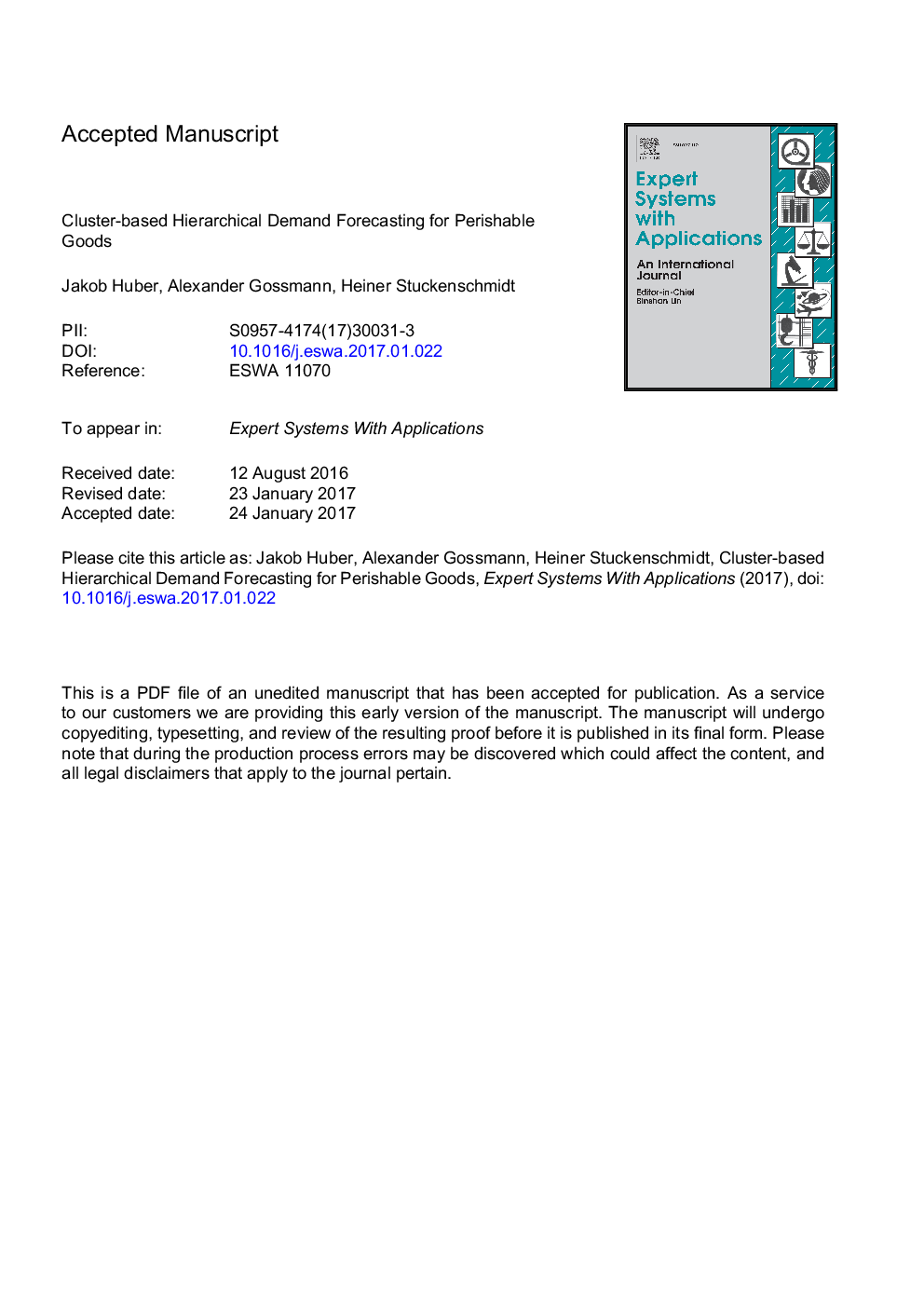ترجمه فارسی عنوان مقاله
پیش بینی تقاضای سلسله مراتبی در مورد کالاهای فاسد می شود
عنوان انگلیسی
Cluster-based hierarchical demand forecasting for perishable goods
| کد مقاله | سال انتشار | تعداد صفحات مقاله انگلیسی |
|---|---|---|
| 162145 | 2017 | 43 صفحه PDF |
منبع

Publisher : Elsevier - Science Direct (الزویر - ساینس دایرکت)
Journal : Expert Systems with Applications, Volume 76, 15 June 2017, Pages 140-151
ترجمه کلمات کلیدی
تجزیه و تحلیل پیش بینی، پشتیبانی تصمیم مواد غذایی تازه شسته و رفته، پیش بینی تقاضای سلسله مراتبی، آنالیز خوشه ای،
کلمات کلیدی انگلیسی
Predictive analytics; Decision support; Perishable fresh food; Hierarchical demand forecasting; Cluster analysis;

